Originally posted at: http://www.nerdfitness.com/
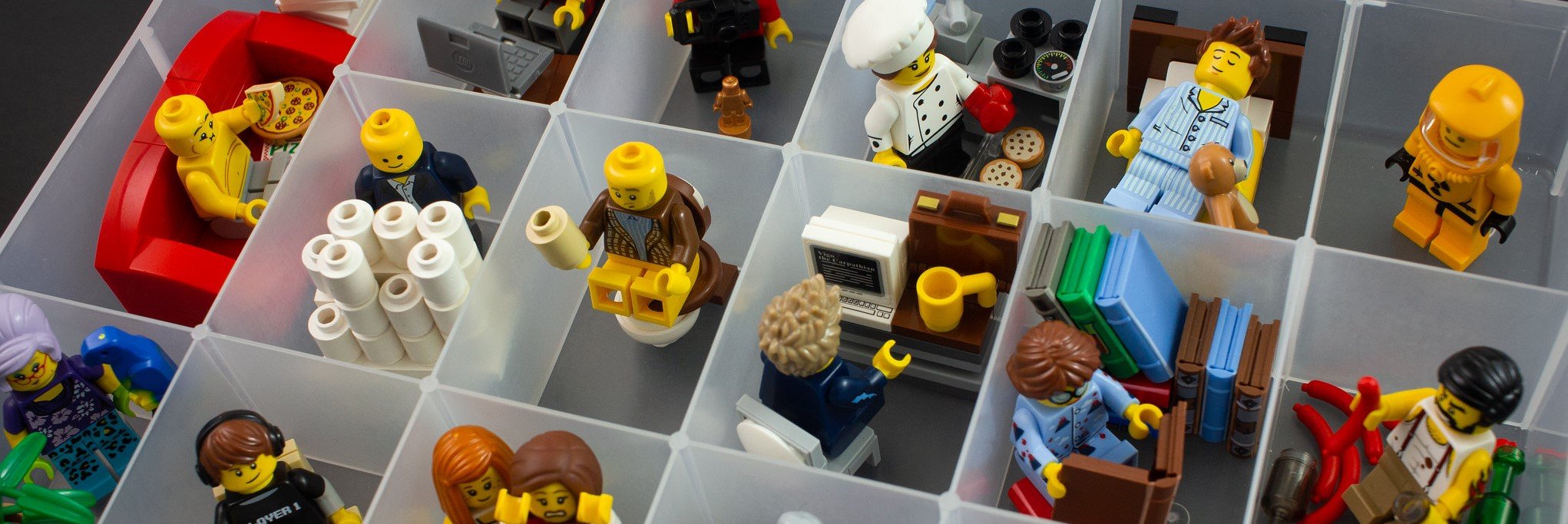
Gyms across America are slowly starting to open back up.
Is this safe?
Should you go?
We’ve been flooded with questions on gym safety from our Online Coaching Clients, so we decided to dive into the topic today with this guide.
Here’s what we’ll cover:
- Is it safe to go back to the gym? (Gyms as a high-risk environment)
- What to research when your gym reopens
- Should I wear a mask to the gym?
- How to clean gym equipment (Proper hygiene)
- How to make the most of your time at the gym (Efficient workouts)
- How to create a home/gym workout hybrid
- Should I go back to the gym? (Next steps)
Important Notice: I am not a medical doctor! This should not be taken as personal advice on whether you as an individual should go back into the gym. I’m merely creating a discussion on the questions all of us should be asking.
In addition, with friends who are both scientists and doctors, and then others who are small business gym owners, this is a challenging thread to navigate. So we’re just going to stick with the facts.
Talk to your physician and blah blah blah, you’re an adult and you can make your own decisions.
Okay, let’s get right to it.
Is It Safe to Go Back to the Gym? (Gyms as a High-Risk Environment)
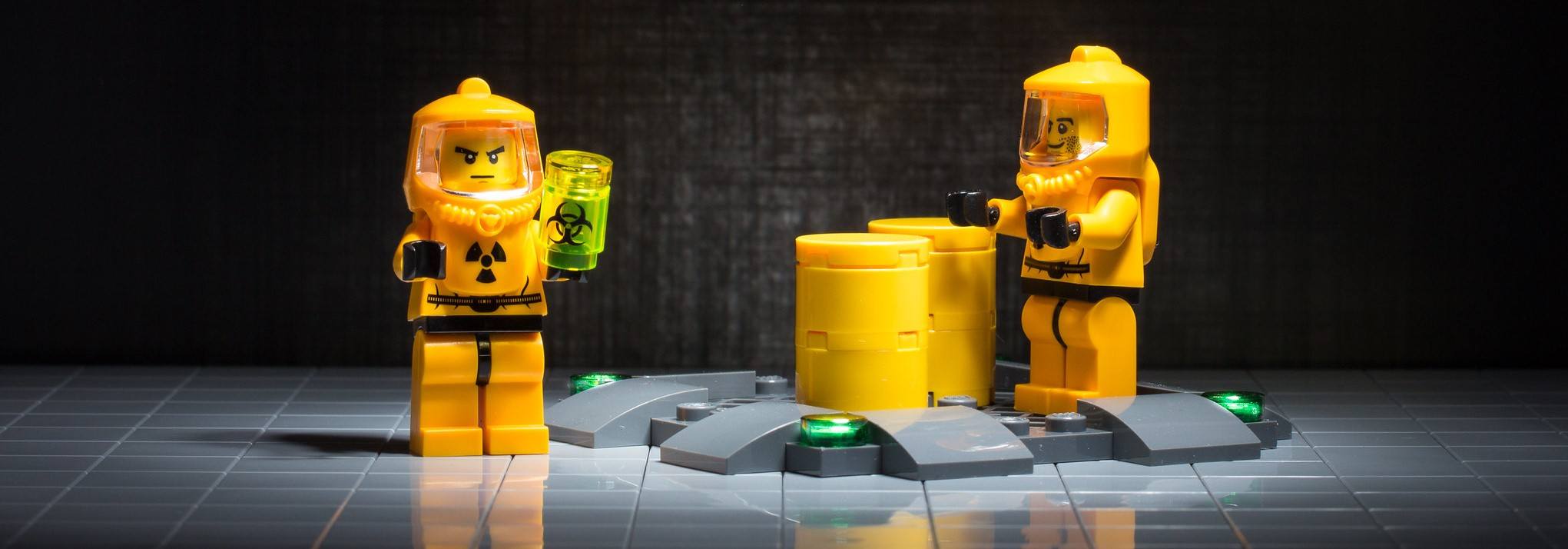
Even before our recent pandemic, many gyms weren’t exactly the cleanest.
One study went out and tested common surface areas in four different gyms, and found that 25% contained ant-resistant bacteria, flu viruses, and other pathogens.[1]
Yikes.
Dr. James Voos, the senior author of the study, told the New York Times why:[2]
“When you have a relatively high density of people exercising and sweating in a contained space, you have conditions where communicable diseases can spread easily.”
Dr. Voos points out the equipment itself can be hard to clean. Metal barbels, dumbbells, and kettlebells often have textured surfaces, to make them easier to grip.
This also allows plenty of tiny nooks and crannies for germs to hide.

That’s why Dr. Jose Jimenez, a University of Colorado professor who studies the coronavirus, calls gyms a “high-risk environment.”[3]
I don’t point this out to make you paranoid of ever stepping foot in a gym again. It’d be kind of like saying “driving a car puts you at significantly higher risk for car accidents, so you should never drive your car again.”
But this context is important for weighing the safety of the gym in a time of a pandemic:
- Should you continue working out in your home gym?
- Or if you’re determined to get back into a public gym, are there actions you yourself can take to lower your chance of catching a disease?
What to Research When Your Gym Reopens

If you do make the decision to return to a reopened gym, you’ll probably notice that things have changed.
- They may limit the number of people who can enter at one (some gyms are requiring appointments).
- Equipment might be spaced out so people can stay separate.
- Common areas that are harder for social distancing, like a locker room or sauna, may be closed.
- Disinfectants and cleaners should be more abundant.
- You might even be required to sign a waiver.[4]
It would be good to find out exactly how your gym has reacted to the COVID-19 outbreak.
Call them before your first trip, and ask them about the bullets above. Also, make sure you specifically ask about what sanitation procedures they have created.
However, even if the staff of the gym is wiping down all the equipment between each use, it would still be best practice to clean everything you touch before and after use.

Your gym’s response to the coronavirus is not the only thing you’re going to want to research.
Before entering the gym, think about:
- How are you going to get to the gym? Driving, walking, public transportation, etc. Your routine may be different today.
- What are you going to wear? Locker rooms may very well be closed. Are you coming before or after work? Make sure you have a plan on how to get into and out of your gym clothes.
- What do you plan on doing at the gym? We’ll talk about efficient workouts and home/gym hybrid routines shortly.
For your first time back, DON’T keep it business as usual. Have a plan for getting to the gym, working out at the gym, and making it home.
Next, let’s talk about wearing a mask.
Should I Wear a Mask to the Gym?

Don’t be surprised if you’re required to wear a mask when your gym reopens.
While every gym’s procedures will be different, some like the national chain Equinox will require all visitors to wear a mask.
Why face masks?
Although research is ongoing, as of June 2020 the coronavirus is believed to be spread through respiratory droplets, passing from one person to the next through exhalations of breath. Which is exactly what happens during a strenuous workout, especially in an enclosed environment.
A face covering like a mask will help contain some of these droplets.[5]
Dr. David Thomas, director of infectious diseases at Johns Hopkins Medicine, supports the idea of masks within gyms.
“I would want the person working out next to me to be wearing a mask,” states Dr. Thomas.[6]
Thomas continues: “We now understand that the degree of expiration, which is how hard you’re forcing air out of your mouth—to sing or shout or exhale—is a major factor in the amount of particles that get forced out of your lungs.”
In other words: people breathe heavily in the gym. If someone has the virus, they’re flinging it even further when they’re running on the treadmill.
So, having all gym patrons utilizing a face covering can help reduce the spread of respiratory droplets.
Requiring people to wear a mask is one thing. Actually training with one strapped to your face is quite another.
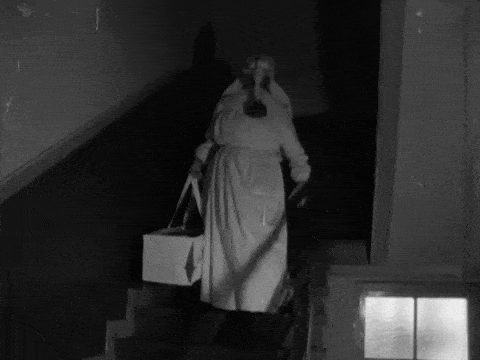
Compared to normal breathing, any mask you wear will constrict your airflow.
How much it does will really depend on the type of mask.
If you wear an N95 mask, like the kind hospital workers use, it might restrict airflow to the point of affecting performance.[7]
You need oxygen to create energy, so it makes sense a properly worn N95 mask might lower your ability to generate power.[8]
On one hand, they provide the most protection. On the other hand, you have to know what you’re doing to wear it correctly.
Hospital staff regularly perform tests to make sure their N95 mask is properly attached.
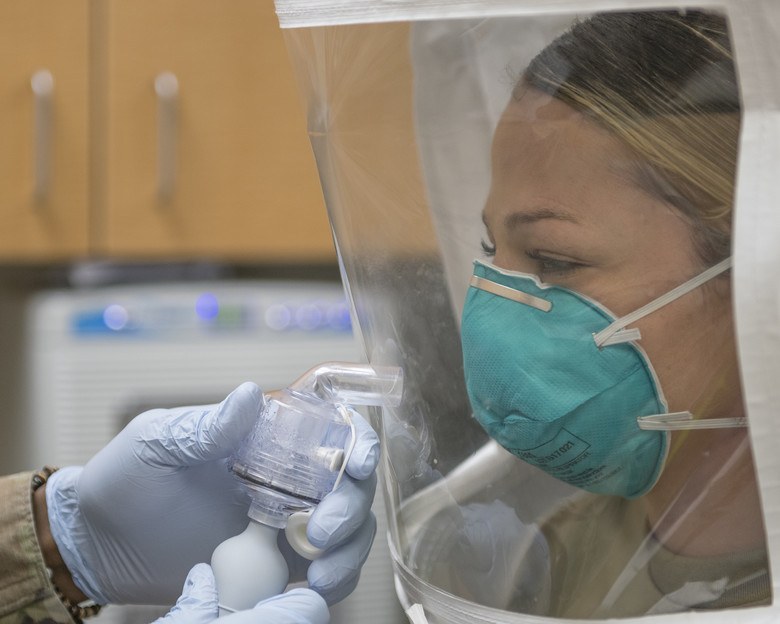
The wearer is presented with a strong-smelling solution, and if they can’t smell it, the mask fits.
If you wear a cloth or more DIY type mask, your breathing will be less impacted but it will still help contain the reach of your exhalation. Just know that it’s probably not going to stop you from breathing in any germs.
Additionally, I find that wearing a mask makes me hyper-aware of each instance in which I reach for my face, and helps remind me that I should be doing things differently and NOT touching my face, eyes, ears, or mouth.
At the end of the day, the decision to wear a mask will come down to you and the rules of your gym.
It’s still probably a good idea, especially if you’ll be training right next to people.
The next good idea on our list would be to sanitize your own equipment.
How to Clean Gym Equipment (Proper Hygiene)
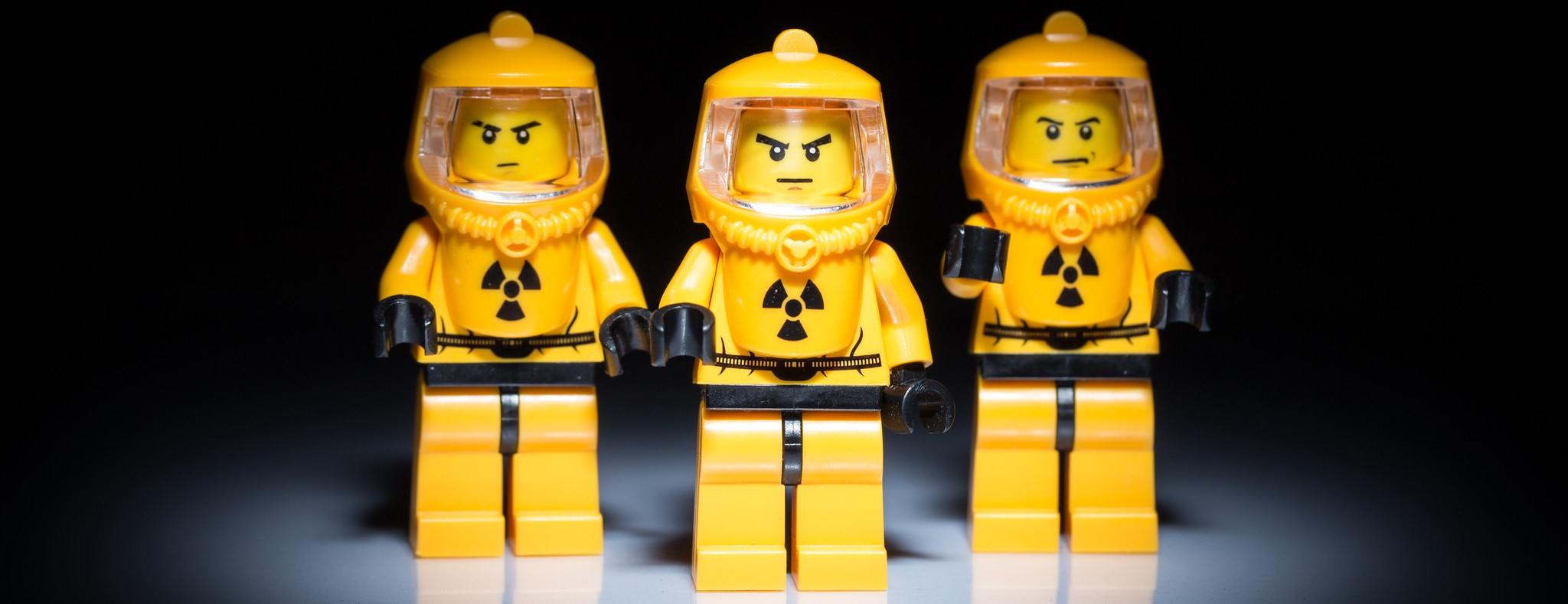
The cleaning staff at your gym are probably great.
I bet most of the people at your gym are courteous too, and wipe down all equipment after use.
However, I prefer the “better safe than sick” approach.
Although experts believe the coronavirus isn’t transmitted through sweat, if somebody coughs into their hand and then touches some equipment, it could result in the transmission of the virus.[9]
That’s why we are going to take a quick lesson on how to clean gym equipment, which you should know even in non-apocalypse times!
Technically, we are going to “disinfect” it.[10]
While soap and water will remove germs from the surface, to really kill the little buggers, we’re gonna need some chemicals.

The Environmental Protection Agency provides a list of disinfectants to use against the coronavirus.
To clean gym equipment:
- Wipe down and clean the equipment for any grime or dust. A wet towel will be fine here.
- Apply the disinfectant and make sure you follow the “dwell time,” or how long the surface is supposed to remain wet. This is often a few minutes for most products, but make sure you follow the manufacturer’s instructions.
- Optional: wipe down the equipment again to remove the residual cleaner, which may cause iteration to the skin. Don’t use the same towel as before.
If you use a lot of equipment at the gym, it’s easy to see how much of a pain this can become.
You might spend as much time cleaning as you are lifting.
In our next two sections, we’ll talk about getting the most bang for your buck at the gym.
How to Make the Most of Your Time at the Gym (Efficient Workouts)
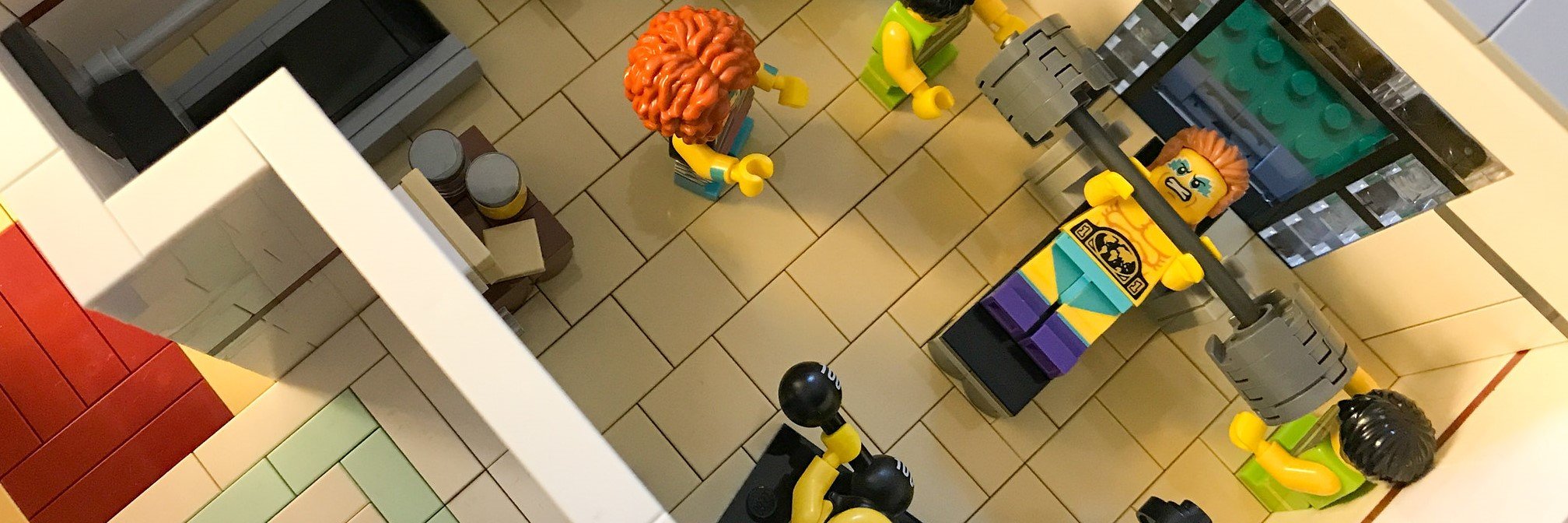
Even before the outbreak of the coronavirus, I’ve always been a fan of getting it and out of the gym quickly.
There are video games to be played, after all.
With gyms a “high-risk environment” for exposure to viruses, today this is even more important.
IF you decide to take the chance, here’s how to make the most of your time at the gym:
#1) Prioritize compound exercises and movements.
At Nerd Fitness, we’re big fans of “compound exercises,” which require more than one muscle group working together to complete the movement.
Think of exercises like squats and pull-ups.
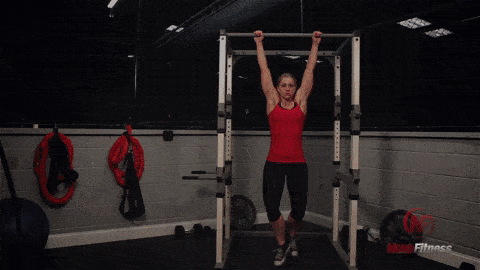
With a pull-up, you’re training all of your back muscles, biceps, lats, traps, and abs.
Compare this to bicep curls, which will more or less just train your biceps.
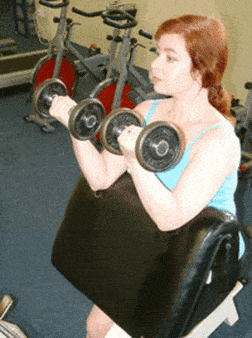
In our guide to functional fitness, we recommend doing compound exercises because they will more closely resemble how your body moves in day to day life.
The other benefit: since you’re training multiple muscle groups at once, you get more done in less time.
#2) Focus on exercises that minimize your body’s contact with communal equipment.
This is part of my personal philosophy with regards to training anyways, but even more so during a global pandemic. In other words, avoid machines you sit on/in, and focus on movements that don’t require you to lie down or sit down:
- Do standing shoulder presses rather than seated shoulder presses.
- Don’t lie down on communal mats for sit-ups, do planks outside.
- Do alternative push exercises (ring push-ups, handstands against a wall) instead of bench presses.
- Focus on exercises that use the same piece of equipment repeatedly (grab one barbell, and then do squats, then overhead presses, then bent-over rows.)
- Spend most of your workout standing, not sitting or lying down.
#3) Consider doing your warm-ups and stretches outside or before getting to the gym (if your commute is short).
An enclosed space allows for easier transmission of a virus since everyone’s breath is trapped together.
You can solve some of this by going outside for part of your workout.
Maybe your warm-up is doing jumping jacks outside:
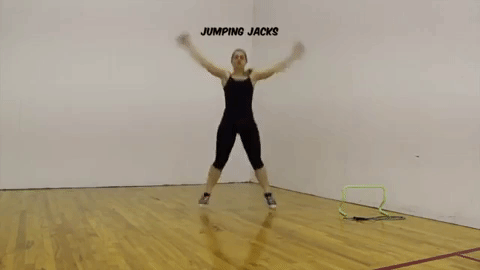
For your post-workout stretch, maybe you find a nearby grassy area, as I do in this video:
#4) Know what you’re going to do before you step inside.
In our guide to the gym, we always recommend having a plan of attack for what you’re doing in the gym. Doubly so now.
Here are some questions to think about:
- What are you training today? Plan your workout, write it out, and bring it with you to the gym.
- If someone is using a piece of equipment, or it’s too crowded around a certain area, what’s your Plan B?
- How long are you planning on staying at the gym? This will make sure you’re moving fast enough from one exercise to the other.
Not only do you want to create a plan for entering the gym, but review it when you get home.
Any hiccups? Did you do everything you set out to do? Would you do anything differently next time?
This will help you better prepare for your return visit.
Next, let’s talk about some ways to utilize your time away from the gym, so you need to visit a little less frequently.
How to Create a Home/Gym Workout Hybrid
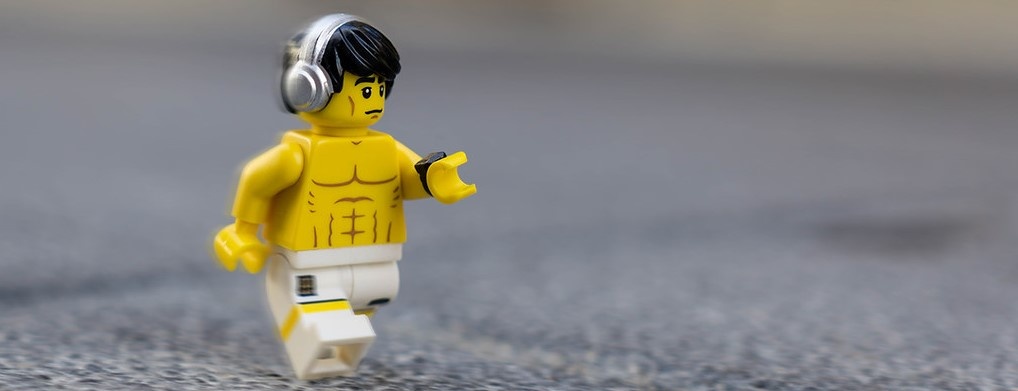
One of the things we are recommending to our coaching clients, if they are debating going back to the gym, is to create a home/gym workout hybrid.
Meaning some days they train at the gym, and on other days they train at home.
There are all sorts of things you can do to create a home gym, but I’ll give you two recommendations that will go a long way:
With bodyweight training, you can actually get a full-body workout with no equipment at all.
The only thing is, working your “pull” muscles can be a bit tricky.
Granted, you can use a doorway to pull from:
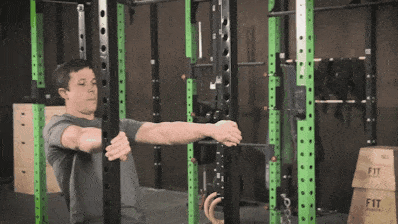
Or even a table can help with inverted bodyweight rows:
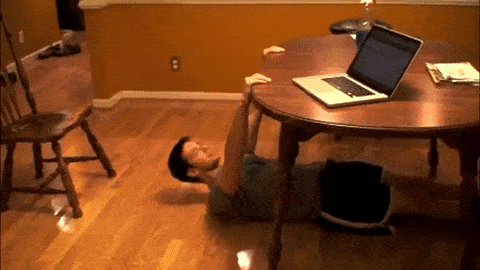
But with a pull-up bar, you’ll have all you need to round out your bodyweight training and work towards getting your first pull-up.
The next thing to buy for your home gym would be a kettlebell.
A kettlebell will offer you a lot of versatility.
For one, you can do kettlebell swings. This will help work your “hinge” muscles, just like you would in a deadlift:
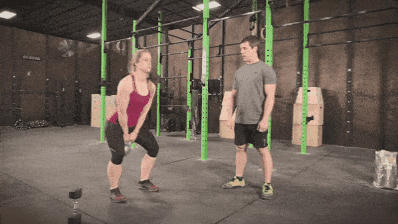
If you do pick one up, make sure you check out our 20-minute beginner kettlebell workout, which can be done with one single bell in your living room.
Your new Gym/Home Workout Hybrid can look like this:
On your home workout days, do pull-ups with your new bar and some push-up variations:
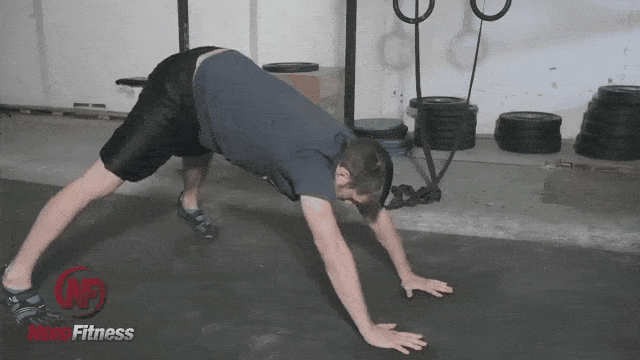
On your gym day, you do barbell squats and deadlifts, since a power rack and all the related equipment might be harder to squeeze into your house:
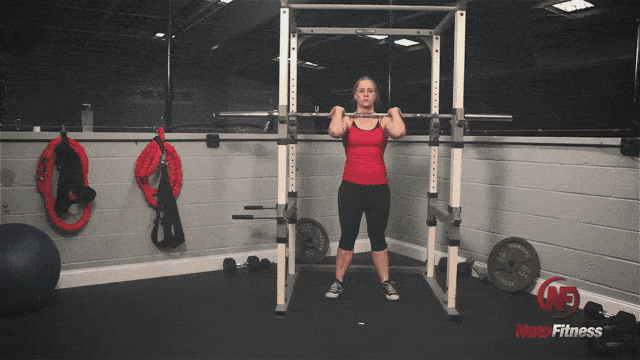
For more ideas on creating a home/gym hybrid schedule, check out How to Build Your Own Workout Routine.
OR, you can look into having one of our coaches build a program for you and adjust it each month based on outside circumstances:
Should I Go Back to the Gym? (Next Steps)
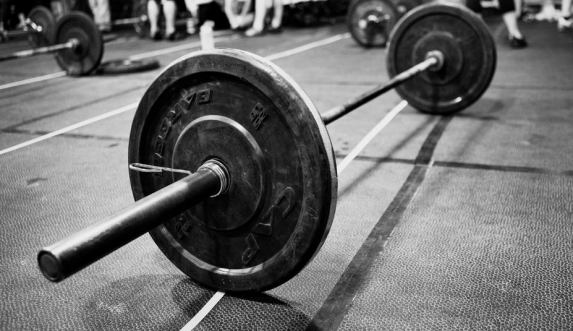
The choice of when to return to the gym will ultimately be a personal one, and heavily dependent on where you live and the status of your state or country.
Yeah, gyms are absolutely “high-risk environments,” and if you can thrive in a home workout environment, your decision will certainly be affected.
Personally, I have built my home gym over the past few months and do not plan on returning to a gym for the foreseeable future.
But exercising is really important for health, including a strong immune system.[11]
Even some experts have returned.
“I still go to the gym,” says infectious disease Dr. Saskia Popescu, who currently supports HonorHealth.[12]
Dr. Popscu argues you can too, as long as you’re smart about it and still understand the risks.
As an individual, performing the following can help keep you safe at the gym:
- Washing your hands frequently.
- Not touching your face while exercising.
- Sanitizing the equipment before and after use.
- Remaining six feet away from others.
It’s not an easy decision, so perhaps you want to create a pro/con list.
When evaluating when to return to the gym, consider:
- The cases in your area. Are they going up or are they relatively low?
- Are you in an “at-risk” demographic? Do you have any pre-existing conditions, or are you in an age bracket that raises your concern? How about the people you live with?
- Your own health. If you’re sick, stay home.
- Do you have other options for exercise? Perhaps building a home gym or maybe you have space in the neighborhood for a run.
- What do you feel is right? Personal preference shouldn’t be ignored here.
Just be safe in whatever you end up doing.
If you want some more specific help, I got you too.
Here are three ways to continue your journey with Nerd Fitness.
Option #1) If you want a professional coach in your pocket, who can do video form checks, provide feedback, and adjust your workouts based on the equipment you have available, check out our Online Coaching Program!
For example, let’s say you want to go to the gym once a week, and the rest of the time you want to train at home. Your Coach can build that workout for you!
Personally, I’ve been working with the same online coach since 2015 and it’s changed my life. You can learn more by clicking on the box below:
2) Exercising at home and need a plan to follow? Have questions you need answered? Join Nerd Fitness Prime!
Nerd Fitness Prime is our premium membership program that contains at-home exercise routines, live-streamed workouts with NF Coaches, a supportive online community, group challenges, and much more!
Option #3) Become part of the Rebellion! We need good people like you in our community, the Nerd Fitness Rebellion.
Sign up in the box below to enlist and get our Rebel Starter Kit, which includes all of our “work out from home” guides.
- The 15 mistakes you don’t want to make.
- Full guide to the most effective diet and why it works.
- Complete and track your first workout today, no gym required.
Alright, now I want to hear from you:
Is your gym open again?
Are you going back anytime soon?
Already been? How was it!?!
Let me know in the comments!
And please, we humans are GREAT at projecting our individual experiences onto everybody else’s experiences.
With this being a worldwide community at various stages of lockdown, let’s have a civil discussion based on what’s happening in your specific location.
Thank you!
-Steve
P.S. If you are still going to avoid the gym, that’s totally cool. Check out our guide, The Ultimate Guide for Getting Fit at Home.
###
Photo Source: How are YOU social distancing?, Dangerous Material, Hazmat Team, LEGO Ninjas, N95 Testing, Hotel Gym, Morning run with the FitBit, Scientist,
- Read, “Infection Risk Reduction Program on Pathogens in High School and Collegiate Athletic Training Rooms.” Source, PubMed.
- You can find their article right here.
- As quoted in the Washington Post.
- As highlighted in Fox Business, Pure Barre, YogaSix and Club Pilates will all make clients sign a coronavirus-specific waiver of liability.
- The Mayo Clinic has more on this.
- As quoted in the Wall Street Journal.
- Read, “Respiratory consequences of N95-type Mask usage in pregnant healthcare workers—a controlled clinical study.” Source, Nature.
- Read, “Variation in the link between oxygen consumption and ATP production, and its relevance for animal performance.” Source, PubMed.
- The CDC discusses how the coronavirus is spread right here.
- You can check out the CDC’s article on cleaning, disinfecting, and sanitizing right here.
- Read, “The compelling link between physical activity and the body’s defense system.” Source, ScienceDirect.
- As quoted in CQ.
Filed under: Fitness

 For now classes are 6pm and 640pm at 2840 Wildwood st in the Boise Cloggers studio.
Book your class NOW!
click this ==>
For now classes are 6pm and 640pm at 2840 Wildwood st in the Boise Cloggers studio.
Book your class NOW!
click this ==>








